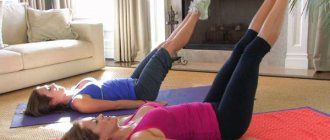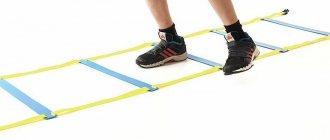What is coordination and why develop it?
Coordination Exercises are the ability to make smooth, precise and controlled movements through optimal muscle interaction.
To perform any movement, the body must tense some muscles and relax others, and do this with the required speed and force. By developing coordination, you learn to act efficiently and economically in any situation, be it a jump, lifting a weight, or a complex gymnastics movement.
Like any motor quality, it can be developed through constant training. Here are some reasons to add coordination exercises to your classes:
- Reduces the risk of falls and injuries. Coordination exercises teach the body to use the right muscles and do so at the right time, so that the chance of maintaining balance in an awkward position or on a slippery surface is greatly increased. Effects of Different Exercise Interventions on Risk of Falls, Gait Ability, and Balance in Physically Frail Older Adults: A Systematic Review .
- Reducing back pain. Coordination exercises help relieve lower back pain, a common problem that affects not only older people, but also young people. A review of 29 scientific papers found that coordination exercises work no worse than other types of exercises.
- Improvement of cognitive abilities. Coordination exercises provide stimulation to the vestibular, neuromuscular and proprioceptive systems, which send signals to various areas of the brain, including the cerebellum, hippocampus, prefrontal and parietal cortices. Since these areas are also responsible for higher cognitive functions, coordination exercises improve Cortical and spinal adaptations induced by balance training: correlation between stability stance and corticospinal activation, From ear to uncertainty: vestibular contributions to cognitive function memory, the ability to maintain attention and better navigate in spaceBalance training improves memory and spatial cognition in healthy adults.
Balance training
Balance is the ability to stand straight without support, regardless of the levelness of the surface. This ability is unconscious and does not depend on the desires of a person. Going deeper into anatomy, the part of the brain that is responsible for balance is the cerebellum. In addition, it is responsible for movements that are performed reflexively, automatically, including muscle tone and coordination of movements. It has been scientifically proven that the better a person is physically developed, the better the cerebellum works. Balance and coordination are trained from an early age so that the child is well developed physically and has no health problems.
Which coordination exercises to choose?
Any physical exercise, from simple morning exercises to complex acrobatic elements, improves your ability to control your body. You can take up yoga or tai chi, learn to juggle, or go to the gym and do strength exercises - all of which will improve your coordination.
If you want to improve your strength in a short time, try complex coordination movements: they require maximum concentration, involve many muscle groups at once and allow you to increase the complexity due to the speed of execution.
We offer several options for such exercises:
- Strength exercises with your body weight.
- Different types of jumping rope.
- Exercises on the coordination ladder.
- Movements with a tennis ball.
Choose what you like best, or try everything.
From simple to complex
You can start training on your own. Comfortable clothes and 10 minutes of free time is all you need. At the first stage, no special equipment is needed. You don't even need shoes.
If you are a beginner, perform each exercise 2-3 times (about 10-15 seconds total).
Make it a rule to do at least 3 balance exercises every day (even if at first these are very simple movements).
Complicate the exercises no more often than once every 5-7 days.
Use the so-called progression principle. Do the exercises:
• standing on both legs
• on one leg
When you feel more or less confident, you can move on to training on uneven fitness surfaces. These are Bosy balancing pillows, balancing platforms and hemispheres, balance boards.
By the way, just one workout on an unstable surface replaces a whole set of exercises in traditional training.
How to do coordination exercises
Exercises with your body weight
You can choose several exercises and do them separately, or create interval training and pump up not only coordination, but also strength and endurance.
Moving around a square
Place your feet slightly wider than your shoulders, lean forward and place your hands on the floor - this is the starting position. At the same time, lift your right arm and left leg off the floor, turn your body to the right, turn over with your stomach towards the ceiling and lower your left foot to the floor, and place your right hand behind your back.
Then repeat the same in the opposite direction. Raise your left arm and right leg, turn your body to the right and return to the starting position. You can always perform this exercise in one direction, as shown in the video, or return in the opposite direction.
Jumping Lunges and Runner's Stance
Perform two jumping lunges with alternating legs. Then move your front leg back and place it on your toes, bend over with a straight back and touch the floor next to your supporting leg with the opposite hand. Move your other hand back, behind your back.
Practice at a slow pace to begin with to get the hang of the movement, then increase your speed.
"Skater" from a lunge
Lunge backwards and come out with a jump. Then lower yourself back into a lunge, and when you come out, jump to the side with your free leg. After landing, do not lower your other leg to the floor - immediately jump back and repeat the exercise from the beginning.
Try to jump to the side as far as possible, accompanying the movement with your hands. Do the required amount on one side, and then change legs and do the same on the other.
Burpee with side jump
Burpee uses many muscle groups and trains endurance. And if you add a little balance to it, it's a great coordination workout.
Perform a burpee on one leg and then jump wide to the side. If this is too difficult for you, try the speed skater jump variation. Do one push-up while lying down, and then three jumps from side to side, landing on one leg.
Chameleon
Squat down and place your hands on the floor. Walk your hands along the floor as far as you can while lying down, but do not straighten your knees. Without leaving the prone position, take a step forward with your right foot and left hand, and lower yourself into a push-up.
Then push yourself up, step with your right arm and left leg, and lower yourself back into a pushup. At each step, touch the floor with your chest, try to place your bent leg closer to your pelvis.
If your arms aren't strong enough to push up with each step, perform the movement at half the range, bending your arms just a little.
Somersault with a pistol exit
This exercise improves coordination, balance, and leg strength.
Roll forward, step onto one leg and extend the other leg forward. Rise up from the pistol and repeat again, this time getting up on the other leg.
If you don’t know how to do these squats yet, then it’s time to learn. After all, this is another great exercise for developing balance and coordination.
Learn











